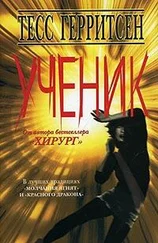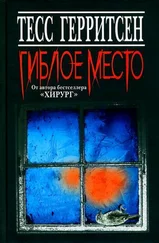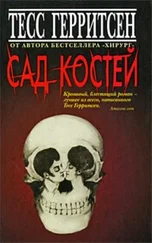Onscreen, a pretty blonde in mud-spattered jeans stumbled through dark woods. Even without any ominous music, the tension was evident in her panicked expression, her gasping breaths. She glanced back over her shoulder and a light flared, the beam illuminating her face, her lips frozen in a rictus of terror.
Smash cut to the same girl, sleeping peacefully in her pink bedroom. The caption read: One week earlier.
“That first scene in the woods was just a flash-forward,” explained Amber. “Now we go back a week to see how our character Anna ended up in those woods, running for her life.”
Cut to Anna’s biology classroom, where the camera panned across the students: two girls, giggling and passing notes. A bored-looking jock slouched in his varsity jacket. A pale and studious boy conscientiously taking notes. Slowly the camera swung to the front of the classroom and focused on the teacher. A man.
Jane stared at the wispy blond hair, the round baby face, the wire-rim glasses. She knew exactly why this actor had been chosen for the role. He was the spitting image of a young Martin Stanek.
“Is that Mr. Simian?” she asked softly.
“Maybe,” said Travis. He added with a sly smile, “Or maybe not. We don’t want to spoil the movie for you. You just have to keep watching.”
Onscreen, the students filed out of the classroom and chattered as they opened their hallway lockers. Here were the standard characters of every teen horror flick: The jock. The wallflower. The nerd. The catty cheerleader. The levelheaded brunette. Of course, the brunette would survive; in horror movies, the levelheaded girl usually did.
Twenty minutes into the movie, the brunette lost her head to an ax.
The death scene was a slo-mo gorefest of spurting blood and flying cranium that made Jane squirm on her couch cushion. Jesus, no wonder she didn’t watch horror flicks; they reminded her too much of work. She stared at the brunette’s headless body sprawled in the woods and remembered seeing just such a corpse lying in a bathtub in Dorchester, a young woman beheaded by her crack-crazy boyfriend. That particular horror was real-life, but at least she didn’t have to watch while it was happening, and she’d had the benefit of being warned ahead of time about what she was going to encounter. Usually the warning came in a phone call from a grim-voiced officer at the scene, advising her that this one’s really bad, and before walking onto the scene she’d brace herself for the sights and the smells, because an audience of patrolmen was always watching and waiting to see if the girl cop was tough enough. She made damn sure she was tough enough.
She glanced at the three filmmakers, for whom fake gore was their stock-in-trade. For them, murder was fun. For me, it’s always a goddamn tragedy .
Onscreen, the killer was just a vague silhouette. No face, no features, only a shadow looming over the brunette’s decapitated body. A shovel sliced into the ground. The severed head arced into the night and landed with a thud in the open grave.
Ben grinned at Jane. “Bet you didn’t see that murder coming, did you?”
“No,” she murmured. What other surprises were lying in store in this film? What were you trying to tell us, Cassandra? The story had eerie parallels with the real-life murders to come: Five potential targets. Death after gruesome death. A relentless killer who worked at an after-school center. Had Cassandra somehow foreseen her own fate, as well as the fates of the other child witnesses?
Twenty minutes later in the film, the faceless Mr. Simian struck again, this time his ax chopping through the muscular neck of the jock. No surprise there; in splatter flicks, the jock was almost always doomed. Nor was Jane surprised when the mean cheerleader went down next in an explosion of brains and fake blood. Mean girls were supposed to die; it was every moviegoer’s guilty pleasure, revenge against all the snooty girls who’d made their lives miserable.
Travis turned to her. “What do you think so far?”
“It’s, uh, engaging,” she admitted.
“Have you figured out who Mr. Simian is yet?”
“Obviously it’s that guy.” Jane pointed to the Martin Stanek lookalike, who was now crouched in a dark closet, peeking through a chink in the wall into the girls’ restroom. On the other side, the wallflower hiked up her skirt and adjusted her tights. The peeping teacher leered. “He’s definitely a creep.”
“Yeah, but is he the killer?”
“Who else would it be? Except for the kids and their parents, there aren’t any other suspects in this movie.”
Travis grinned. “What seems obvious isn’t always the truth. Don’t they teach you that in detective school?”
Jane flinched as a fresh fountain of blood splattered the wall where the peeping Tom had been crouched. The creepy teacher — the man she’d assumed was Mr. Simian — collapsed to the floor, an ax embedded in his skull. Slowly the figure of the real Mr. Simian moved into the frame, into the light. A killer she’d never suspected. A killer wearing a knit hat sparkling with silver beads.
“Surprised ya, right?” said Travis. “It’s just Horror 101. The killer’s always the person you least suspect.”
Jane pulled out her cell phone and called Frost. “We had it wrong,” she told him. “This case was never about the Apple Tree. It was never even about the Staneks.” She stared at the screen, where a terrified Anna was running through the woods, pursued by a killer who now had a face. “It’s all about Lizzie DiPalma. And what really happened to her.”
For seventeen years after her daughter’s disappearance, Arlene DiPalma had remained in the same neighborhood and in the same house that she’d shared with her nine-year-old daughter. Perhaps she’d nursed the hope that Lizzie would someday walk through the front door again. Perhaps the loss of her only child had frozen her in a grief so profound that she was unable to move on, unable to cope with any change. Then, two years ago, change was thrust upon her when her husband collapsed and died of a stroke.
Sudden widowhood was what finally shook Arlene out of her state of suspended animation. A year after her husband’s death, she’d sold her Brookline house and moved to this seaside retirement community in East Falmouth, on the elbow of the Cape Cod peninsula.
“I always wanted to live near the water,” said Arlene. “I don’t know why it took me so long to finally make the move. Maybe I never really felt I was old enough to be in one of these retirement places, although I certainly am.” She stared out her living-room windows at Nantucket Sound, where the water was a forbidding gray under wintry storm clouds. “I was forty when Lizzie was born. An old mommy.”
Which would make her sixty-nine now, thought Jane, and the woman wore every one of those years on her face. Grief was like an aging pill, spinning the years in fast-forward, graying one’s hair, sagging one’s flesh. On the mantelpiece was a photo of Arlene as a newlywed, fresh-faced and pretty. That young woman was nowhere to be seen now; like her daughter, Lizzie, the newlywed Arlene had long ago gone missing.
Arlene turned from the window and sat down to face Jane and Frost. “I thought the police had forgotten all about her. After all this time, I was surprised to hear from you. When you called me this morning, I couldn’t help thinking that maybe you’d finally found her.”
“I’m sorry we had to disappoint you, Mrs. DiPalma,” said Jane.
“Twenty years, with so many false leads. But it never goes away, you know?”
“What doesn’t?”
“Hope. That my daughter’s still alive. That all this time, someone has kept her in his basement, like those girls in Ohio. Or like that poor Elizabeth Smart, who was too terrified to run away from her kidnappers. I keep hoping that whoever took her just wanted a child of his own, someone to love and take care of. That someday my Lizzie will remember who she really is, and she’ll pick up the phone and call me.” Arlene took a deep breath. “It’s possible,” she whispered.
Читать дальше











![Тесс Герритсен - Считать виновной [litres]](/books/395939/tess-gerritsen-schitat-vinovnoj-litres-thumb.webp)
![Тесс Герритсен - Двойник [litres]](/books/427680/tess-gerritsen-dvojnik-litres-thumb.webp)